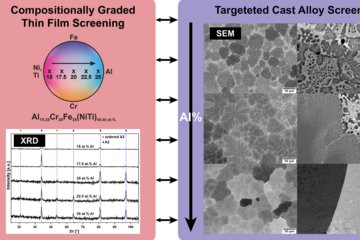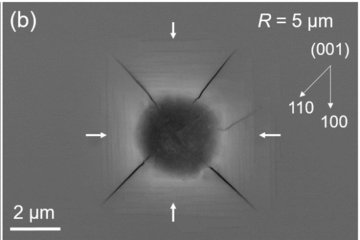All genres
1.
Journal Article
Effects of heat treatment on near surface elemental profiles of Fe–15Cr polycrystalline alloy. Corrosion Engineering, Science and Technology 40 (3), pp. 217 - 225 (2005)
2.
Journal Article
Initial oxidation of Fe–Cr alloys: In situ STM and ex-situ SEM observations. Materials at High Temperatures 22 (3-4), pp. 567 - 573 (2005)
3.
Journal Article
Initial oxidation of Fe–Cr alloys: In situ STM and ex situ SEM observation. Materials at High Temperatures 22 (3-4), pp. 567 - 573 (2005)
4.
Journal Article
Annealing of Fe–15Cr alloy in N2–5%H2 gas mixture: Effect of hydrogen concentration. Defect and Diffusion Forum 237-240, p. 928 - 928 (2005)
5.
Journal Article
Evolution of near-surface concentration profiles of Cr during annealing of Fe–15Cr polycrystalline alloy. Applied Surface Science 249 (1-4), pp. 127 - 138 (2005)
6.
Conference Paper
Development and Composition of the High Temperature Oxide Film Grown on Fe-15Cr during Annealing. Passivity 9, Paris, France, June 27, 2005 - July 01, 2005., (2005)
7.
Conference Paper
Effects of heat treatment on the oxide layer of Fe–15 at.% Cr alloy surface. Proceedings of EUROCORR 04, Nice, France, 2004. Long Term Prediction and Modelling of Corrosion 1, (2004)
8.
Talk
Development and Composition of the High Temperature Oxide Film Grown on Fe-15Cr during Annealing. Passivity 9, Paris, France (2005)
9.
Talk
Effects of heat treatment on the oxide layer of Fe–15 at.% Cr alloy surface. EUROCORR, Nice, France (2004)
10.
Talk
Annealing of Fe–15Cr alloy in N2–5%H2 gas mixture: Effect of hydrogen concentration. DIMAT, Krakow, Poland (2004)
11.
Poster
Oxidation resistance of alloys for flexible tubes in dry air and KCl containing atmospheres. Eurocorr 2005, Lisbon, Portugal (2005)
12.
Poster
Initial oxidation of Fe-Cr alloys: In situ STM amd ex-situ SEM studies. 6th International Conference on the Microscopy of Oxidation, Birmingham, UK (2005)











